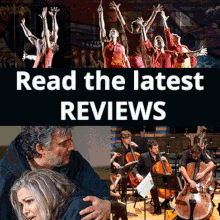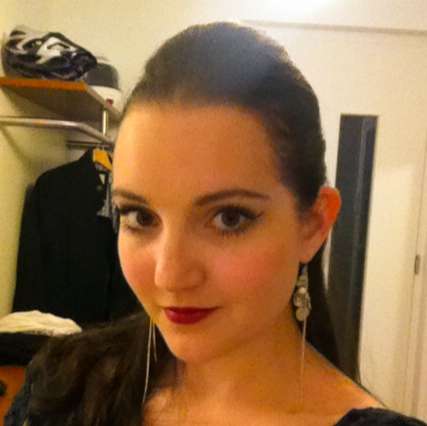“My main job is to bring people together and convince them that the selection of productions is exactly the right one,” Veronka Köver tells me. She is project manager of the ARTE Opera Season and responsible for Europe’s largest digital opera house.
Together with 23 partner opera houses and festivals from 14 countries, ARTE’s aim since 2018 has been “to offer freely accessible streams throughout Europe. Thanks to a European Commission funding programme, the streams can be subtitled in six different languages, enabling us to reach 70% of Europeans in their mother tongue.”
Köver is sent into a rapture when I ask her about the process of selecting the productions that are to be streamed as part of the ARTE Opera Season: “You feel like a child in a sweet shop!” Unlike other streaming platforms, the aim is not just to select the best productions, but to “put them into a dialogue with one another.”
“We don’t want to just be an aggregate,” Köver says, “it’s a properly curated season. We want to create an arc and tell a story. We do that by creating a bouquet from a range of productions, from new discoveries to repertoire bonbons. But we also deliberately choose special focuses. This season, for instance, we have the French soprano Julie Fuchs, the director Dmitri Tcherniakov and several operas based on Shakespeare.”
At the time of our conversation, preparations are in full swing for the next stream: Prokofiev’s War and Peace in a production by Dmitri Tcherniakov, conducted by Vladimir Jurowski at the Bayerische Staatsoper. Showing this production against the backdrop of the global political situation is “a challenge, but also an opportunity. The interview shown during the interval illustrates how Tcherniakov and Jurowski wrestled with the idea of staging this opera in 2023 and what motivated them to do so. I think this is also a mandate from ARTE to show an opera like this across Europe today.”
On the anniversary of the beginning of the war, ARTE broadcast a production of Ukrainian composer Alexander Rodin’s opera Kateryna, which premiered at Odessa Opera in September 2022: “It was the very first time ever, in what is now our fifth season, that we presented a production by a house that is not a permanent partner of the season. But it also shows the solidarity of the sector and the strong bond between the opera houses, because all partners were convinced that it was the right thing to do.”
Flexibility was important in this instance. The realisation of individual streams is always “a big planning, coordination and production job, involving dozens of people. It’s an incredibly exciting task and sometimes you don't know until moments beforehand how all the small details – minimal to viewers, but of great importance to us – will ultimately be implemented.” In the end, however, the audience should not notice this huge amount of work in the background. “The magic and enchantment of opera should remain unspoilt.”
To make this enchantment easily accessible, ARTE adopts different approaches. There are “live streams that are broadcast simultaneously on TV, web-only live streams and videos on demand,” Köver explains. She elaborates on how the decision is made as to whether a performance will be shown live or on demand. “Later in the season, for example, we have a very exciting and daring project from La Monnaie / De Munt in Brussels, in which Donizetti’s four Elizabethan operas are woven together over two evenings under the name Bastarda!. As this is a re-arrangement of these operas, it makes sense to show this project as a video on demand, so that the inherent dramaturgy of this production can be appreciated to the fullest.”
In other cases, however, a live stream is the best choice – there is “obviously a certain magic to the live experience which you can also experience as an online viewer.” The lockdowns of 2020–21 certainly played into ARTE Opera’s hands. “The partner houses got their own streaming activities going as a result of the pandemic. It was a way to stay connected to the audience despite closed doors.”
After the reopening, many houses realised that it is difficult and costly to retain audiences on their own. The ARTE Opera Season became a perfect partner, because we are not only a platform to which they provide their content, but we are also a network. Finnish National Opera, for example, now even shows streams of other partners on their own platform – the houses are not in fierce competition, but we are all pulling in the same direction.”
Köver also emphasises the trusting collaboration and excellent working relationship between the individual partners and ARTE, which makes planning possible even before the individual opera houses present their seasons. This form of close cooperation makes it possible to “get to know the partners – their strengths and special features; one knows which productions from which house are particularly exciting and to which extent they can appeal to a European audience.”
Indeed, one of the goals is to expand this European element even more. The season is not solely intended for the classic core countries of ARTE – Germany and France – but for the whole of Europe and in some cases also for a worldwide audience. There are currently no plans to expand their work to even more opera houses in the form of fixed partnerships, but “we are not ruling it out and in exceptional cases, such as Kateryna, it is also possible to include productions by non-fixed partners in our season.”
Köver sees a challenge for the coming years in the ever-growing competition in the streaming market, as all providers “vie for the audience’s favour and attention. However, we set ourselves apart from the competition by showing unique content, carefully curating and placing productions not as individual programmes but as a season that creates an overall narrative. And that's also something we want to develop further in the future.”
One question close to Köver's heart in this context is how to ensure that opera as an art form remains relevant and alive in the years to come: “It is not a question of dragging opera into the 21st century artificially. However, opera must not become a mere project of a historical preservation society. It is not about a museum practice in which only the great masterpieces of the past are performed. Of course they have a central place, the operatic canon belongs in the repertoire and will not disappear, but if we want opera to have a future, then it must also keep reinventing itself. This is achieved, for example, through commissioned works or new projects. And many of our partner houses are daring to take this step!”
Another aspect Köver addresses is the necessary balancing act of retaining the existing audience, while building up a new one at the same time. Streaming is certainly a way to “lower the barriers for those who have not yet come into contact with opera, or face financial, socio-cultural or local obstacles. It’s all about the possibility of participation, of inclusion. It can be easier to click on a stream than to open the door of an opera house.”
Yet this type of opera visit cannot and should not replace a live performance: “the experiences complement each other. This is also an opportunity for opera houses to address a younger and more diverse audience in addition to the regularly attending audience. This is achieved through participatory projects and interesting, bold programming in the seasons; and this is precisely where we work hand in hand with the opera houses.”
This interview was sponsored by ARTE.
Translated from German by Elisabeth Schwarz.




